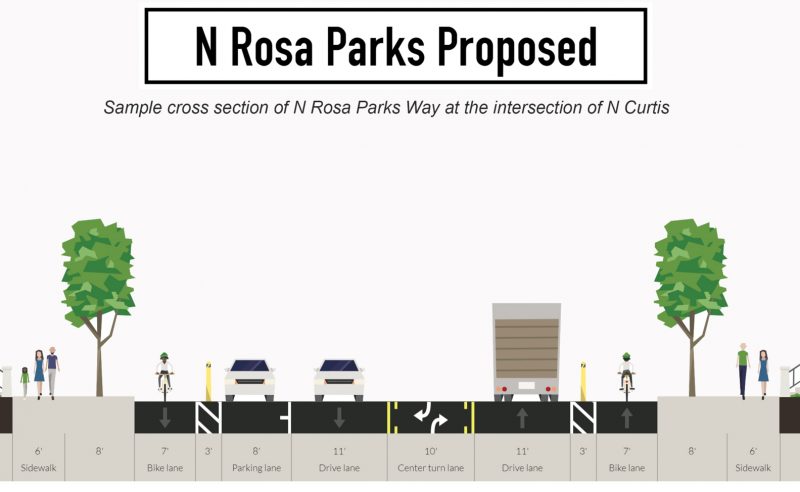
A key east-west street in north Portland is poised for a makeover.
The Portland Bureau of Transportation will piggyback on a maintenance and paving project to add protected bike lanes and other upgrades to North Rosa Parks Way.
As detailed in their just-updated project website, the plan is to update Rosa Parks from North Willamette to Martin Luther King Boulevard. That’s a nearly two-mile section of road that crosses five major north-south bikeways (Williams, Vancouver, Concord, Michigan and Willamette), four schools (Growing Seeds, Chief Joseph, Ockley Green, and Holy Redeemer) and two parks (Peninsula and Arbor Lodge). Other destinations include the Yellow Line MAX stations, New Seasons Market and other businesses at Interstate, restaurants and markets at Denver, a medical clinic at Greeley and more.

Most notably, the City has proposed to create 10-foot wide bike lanes on both sides of the street between Delaware and Willamette (design proposals for the rest of the project haven’t been released yet). The north side would be “parking protected” — meaning auto-parking spaces would float in the street between the curbside bike lane and standard lanes. On the south side, PBOT would prohibit on-street parking. The bike lanes would have a three-foot buffer zone with plastic curbs and delineator wants within it.
Here’s the proposed striping from Willamette to Curtis:
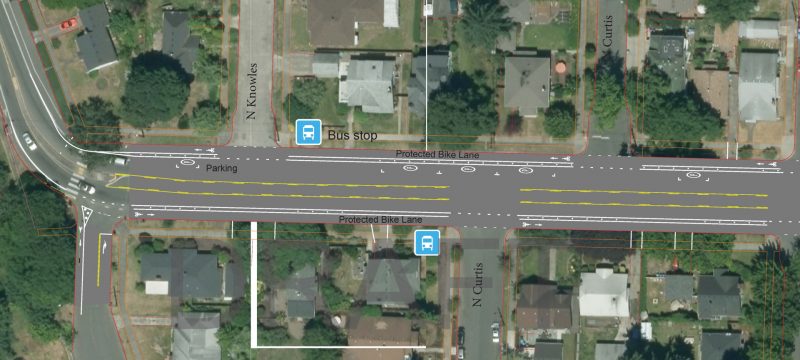
Advertisement
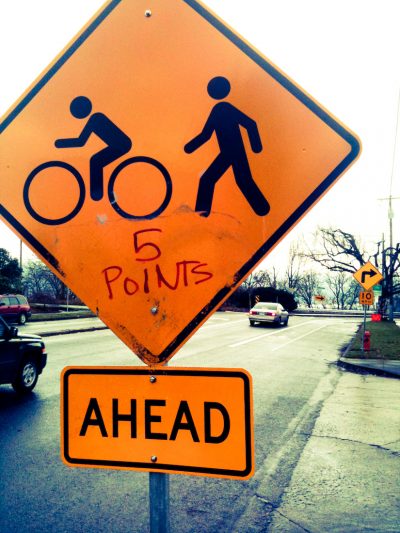
PBOT is doing this because they recognize the growing importance of Rosa Parks as a bikeway, they realize it should be used more efficiently — and most importantly, they know the street’s current design leads to people driving way too fast which has resulted in too many injuries and fatalities.
In the 10 years from 2006 to 2015, PBOT counts 19 people who have either been injured or killed in crashes while using the corridor. 11 of those collisions involved people bicycling — with nine of them happening between Willamette and Interstate. In 2008 we reported on a serious injury crash at North Albina. And Since 2016 two separate crashes at North Delaware led to fatality and injury. One of those crashes paralyzed Arbor Lodge resident Brian Duncan.
PBOT cites speeding as one of the main reasons they want to change the design of the street. When they analyzed speeds at North Curtis in 2013 they found the average person was driving 32 mph (two miles over the posted speed limit). “Considering that people are driving from or towards a sharp turn at Willamette,” they write on the project website, “the speeds are particularly high.”
This section of Rosa Parks also allows on-street auto parking on both sides of the street; but PBOT says that’s valuable space that is currently being used “inefficiently”. Citing the same “low parking utilization” rationale they used prior to removing on-street parking on Willamette Boulevard late last year, PBOT said a recent study showed a paltry 17 percent parking occupancy rate on Rosa Parks between Willamette and Delaware. “Only one block face out of 12 had more than half of the spaces used… while four block faces had 0 percent occupancy.”

(Photos: J. Maus/BikePortland)
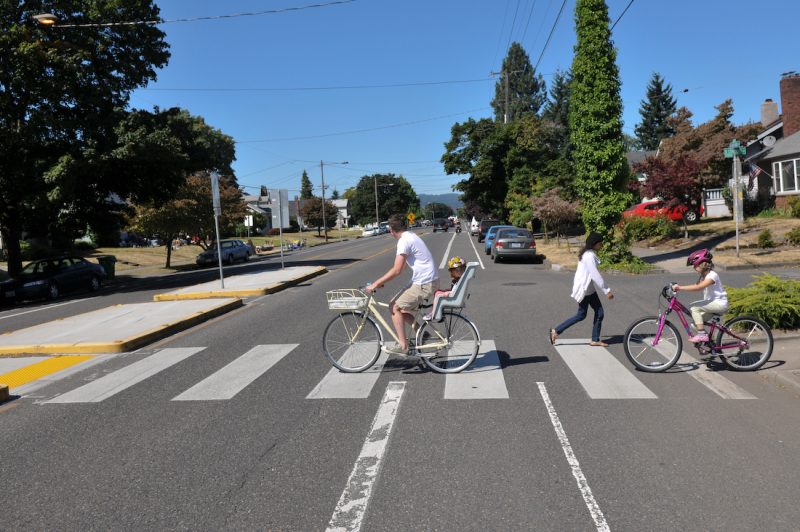
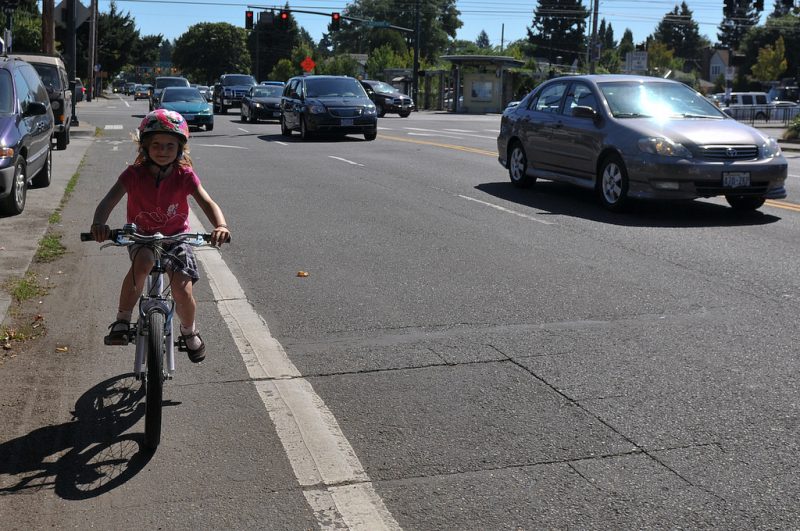
Given these current conditions PBOT wants the street to include new crossings, improved transit infrastructure at several locations, and protected bike lanes. “These changes will emphasize the neighborhood character of the street,” their letter said. “A street design with a more neighborhood feel.”
At this point, PBOT says they haven’t finalized designs because they’re, “Currently doing outreach to the neighborhood to better understand community needs and preferences.”
Rosa Parks currently has standard, unprotected, door-zone bike lanes that were installed in 2011.
We’ll be following this project closely. As a nearby resident I’ve watched cycling conditions worsen on Rosa Parks in recent years as driver behavior has gotten worse and the amount of people in cars has increased dramatically. The biggest danger spots PBOT will have to address in this project are where Rosa Parks crosses I-5 — an area roughly from North Mississippi to Concord. As a section with daily peak-hour gridlock due to on-ramps and off-ramps to the freeway, PBOT will have to get some of the designs approved by the Oregon Department of Transportation.

One particularly troublesome spot is at Rosa Parks and Michigan where the road increases to two standard lanes westbound just prior to the freeway on-ramp. Every day during rush-hour the road backs up as northbound freeway traffic backs up into the neighborhood. As you can see in the photos above, in order to let through-traffic get by, drivers will move over onto the existing bike lane (which is clearly illegal) so that other drivers can get around them. This blocks the bike lane and causes dangerous interactions. PBOT is aware of this problem and they’ve said we can expect it to be addressed in this project.
If you ride on Rosa Parks Way and want to share your feedback with PBOT, email Project Manager Scott Cohen at scott.cohen [at] portlandoregon.gov.
— Jonathan Maus: (503) 706-8804, @jonathan_maus on Twitter and jonathan@bikeportland.org
Never miss a story. Sign-up for the daily BP Headlines email.
BikePortland needs your support.



